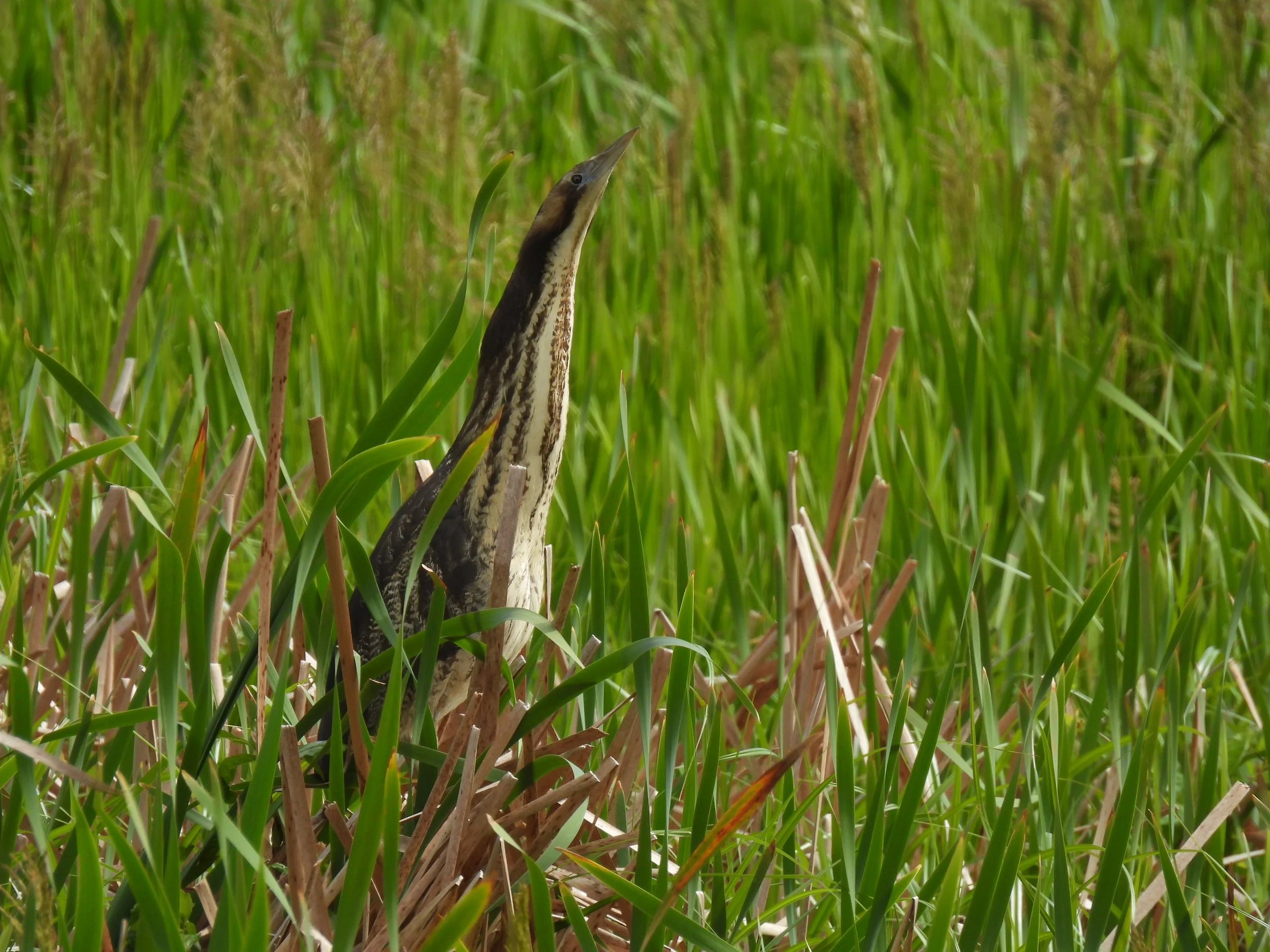Uncovering the mystery of Matuku in Mangawhai.
This article was published in the Mangawhai Focus, October 2025.
The Critically Endangered Matuku-hūrepo (Australasian bitter). Photo, Shorebirds Trust.
The booming has begun, kicking off breeding season for one of our most elusive birds, the Matuku-hūrepo or Australasian bittern. Matuku-hūrepo literally translates to ‘secretive booming wetland heron’, a perfect description for these critically endangered, rarely seen wetland specialists.
Over spring and early summer, males produce a deep booming call to defend their territories and attract females. The booms, often compared to blowing across the top of a bottle, can travel for over one kilometre, particularly at sunrise and sunset.
With Matuku being a combination of rare, extremely shy and well camouflaged, they are exceedingly difficult to find. Listening for males is one of the best ways to study them. A booming male indicates potential breeding sites, although whether he has one, multiple or no females in his territory largely remains a mystery. Much less is known about the relatively silent females. In fact, until very recently, little was known about Matuku beyond the fact they are rapidly disappearing.
Starting in 2022, the Shorebirds Trust set out to investigate how many Matuku were left in Mangawhai. With community support and an incredible team of volunteers, the project is now in its fourth year of monitoring Matuku, from Marsden Point to Pākiri.
The results have exceeded everyone’s expectations with 22 to 24 males identified each year. Additionally, an engaged community has sent in multiple photos of chicks, demonstrating there are also breeding females.
These numbers might seem small, but they are hugely significant. The Marsden Point to Pākiri coast is now recognised as an important area for Matuku. By comparison, Whangamarino, a renowned national stronghold, has less than 15 males remaining!
Nationally, Matuku numbers have declined by around 90 per cent, with less than 1000 thought to remain. Their ongoing decline is closely linked with the loss of their wetland habitats. Over 90 per cent of Aotearoa New Zealand’s wetlands have been drained (closer to 95 per cent in Northland), and the remaining fragments often can’t meet the ecological needs of Matuku, who require clear shallow water to hunt for fish. Add predation from introduced mammals like stoats and feral cats, and it’s easy to see why our Matuku are in trouble.
Through its monitoring programme, the Shorebirds Trust has identified important locations to focus restoration efforts. At key sites like Mangawhai Harbour, targeted management actions are underway, including the installation of predator control, and ‘Slow for Bittern’ road signs. Continued monitoring will measure the success of these actions and, hopefully, reveal an increasing population.
The success of this project has also helped spark national interest in the species, and the Mangawhai based Shorebirds Trust is helping lead and support Matuku monitoring and management regionally and nationally.
This is truly a collective effort, with support provided by the Rodney Local Board, Auckland Council and Northland Regional Council. Crucially, this monitoring work would not be possible without the dedicated volunteers who spend their evenings listening for these elusive birds, and our thanks go out to them all. It’s a great example of the community pulling together to care for this special place we call home.

